How to Make Money Making Apps

How to Make Money Making Apps
Learn how to monetize your mobile app in 3 steps: define your goals, choose an app monetization strategy, and track mobile app usage.
Are you considering developing a mobile app for your business but unsure if it’s a sound investment?
You’re not alone. More than 40% of small businesses have a mobile app, and that number is only expected to grow.
These businesses have a variety of compelling reasons for turning to apps, including providing a better customer experience, increasing sales, and staying competitive in the market.
Others, however, have the goal of developing an app as an additional revenue stream.
Of course, while we’d all like to develop the next billion dollar app, competition is fierce. As of 2017, there are some 2.8 million apps in the Android App Store and 2.2 million in Apple's App Store.
It is still possible to generate revenue through your apps if that’s your goal but to do so, you’ll need to develop a thoughtful mobile app monetization strategy.
In this guide, we explore four popular mobile app monetization strategies:
- In-app advertising
- Freemium mobile app
- Premium mobile app
- Subscription-based mobile app
Learn what these mobile app monetization strategies entail and how to choose the best fit for your business’s mobile app.
Step 1: Define Goals for Monetizing Your Mobile App
Before deciding how to make money with your mobile app, clearly define the goals for your app by asking yourself 3 questions:
- What is your mobile app’s value proposition?
- What are your competitors doing?
- How will you acquire app users?
What Is Your Mobile App’s Value Proposition?
Defining a strong value proposition is key to monetizing your app.
What problems do your users have? How does your app solve them?
Your value proposition says how your app benefits users, not which features it offers.
For example, project management app Trello’s value proposition says, “Trello gives you perspective over all your projects, at work and at home.”
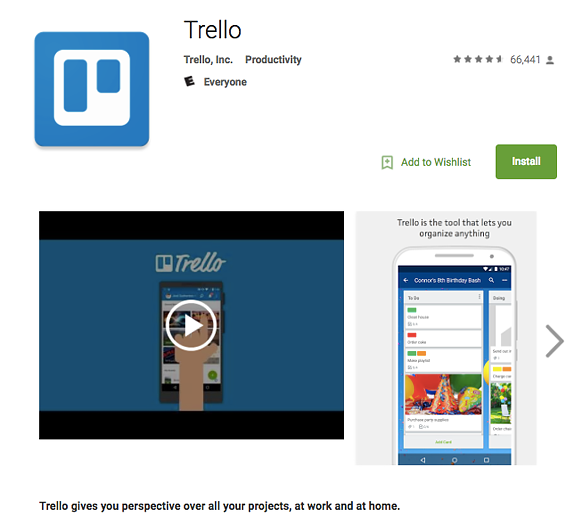
Focusing on the value of the Trello app shows users how they can incorporate it into their daily lives. This approach is more beneficial than focusing on features: “We’re the best project management tool in the app store.”
What Are Your App Competitors Doing?
Studying your competitors’ app offerings may reveal how you can differentiate your app: features, value proposition, and monetization model.
Do your competitors have apps? What monetization model are they using?
For example, if reviewers on your competitors’ app complain about spammy ads, that’s a sign that you could offer a better user experience with a different monetization method.
How Will You Acquire App Users?
Defining your user acquisition strategy is a key step in generating revenue with your app.
A survey of app development firms from around the world recommends using social media (37%), paid advertising (28%), and app store optimization (ASO) (21%) to attract app users.
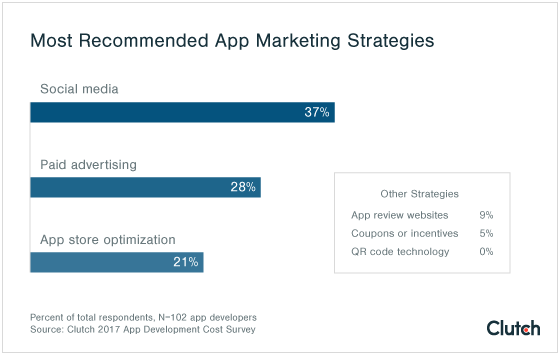
A plan to market your app and attract new users likely will include a combination of marketing tactics such as ASO and social media or advertising and incentives such as rewards or points.
Learn more about how to market your app and attract customers on Quora, Instagram, and other low-investment channels.
Step 2: Choose A Mobile App Monetization Model
App user’s today are increasingly unlikely to pay for apps: Only 33% of mobile users paid for an app in 2017.
Making money with a mobile app used to be simple: You had free apps with ads and paid apps without ads.
But, as in-app advertising falls out of favor, what methods for app monetization can you pursue?
Below, we explore three of the most popular app monetization strategies:
- In-app advertising
- “Freemium” mobile apps
- Premium mobile apps
- Subscription-based apps
What Is In-App Advertising?
Mobile apps make money through in-app advertising by partnering with brands that pay for advertising space. The advertisement may be a native or banner ad, pop up, or video.
Consider popular travel planning company Kayak.
If you’re searching for a flight to San Francisco, an ad for Airbnbs in the area may show up in your search results.

This example of a native advertisement integrates smoothly with the content on Kayak’s app – flights, car rentals, and hotels. An ad for Airbnb is relevant to a user searching for travel deals.
In-app advertising, such as the Kayak-Airbnb example, earned about $72.5 billion in 2016.
However, if you pursue in-app advertising to monetize your app, remember to keep the user experience in mind.
Choose a trusted mobile ad network that can help you avoid user drop-off and find success with in-app advertisements.
What Are Freemium Mobile Apps?
Freemium mobile apps allow users to download your app for free but pay later to unlock more features or content, remove ads, or make purchases.
It’s really the best of both worlds – the developer generates revenue, and the user gets to try the app for free, then pay if they like it.
Freemium apps offer extra features that a user can access after paying:
- Credits or coins to unlock a new level in a game
- Ad removal
- Storage space
For example, the game Double Dice charges users $1.99 to play without advertisements.
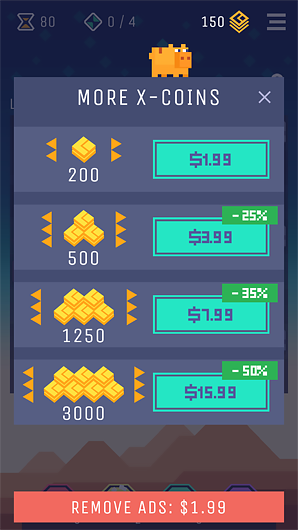
Freemium mobile apps allow users to preview what your business offers without any upfront investment.
What Are Premium Mobile Apps?
Premium, or paid mobile apps, require users to pay before downloading the app.
If you plan to monetize your app using a premium model, consider developing two separate apps: a paid version and a free, or “lite,” version.
For example, constellation viewing app Skyview offers both a paid and free version.

The free version of SkyView lets users access similar features as the premium version, and they can make in-app purchases.
Alternatively, the premium version SkyView lets users access additional constellations without making in-app purchases.
Ideally, your free app should be robust enough that it hooks users.
This means that users should be able to access most of the main features – enough to fulfill your value proposition. But, the features in premium should also be compelling and substantial enough that it’s worth buying.
What Are Subscription-Based Mobile Apps?
Subscription-based mobile apps offer a free version, or free features, with the option to add on a subscription.
Consider the popular music streaming app Spotify.
Users can download the app and listen to their favorite artists for free. But, music listening is limited to “shuffling," or playing songs randomly, and users must listen to ads between songs.
For a monthly fee, users earn extra benefits such as ad removal, the ability to download music and unlimited song skips.
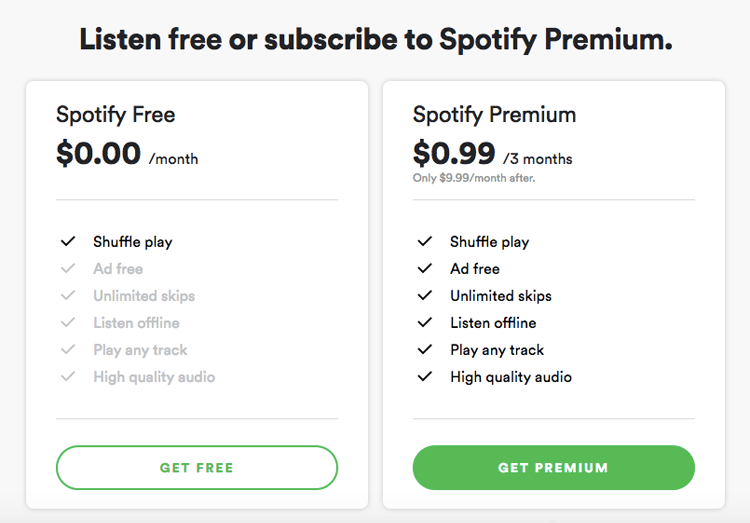
Spotify’s freemium model capitalizes on users’ desire to choose the songs they want to listen to and enjoy uninterrupted music.
Other mobile apps, like Tinder, offer multiple subscription-based tiers with an expanded set of features.
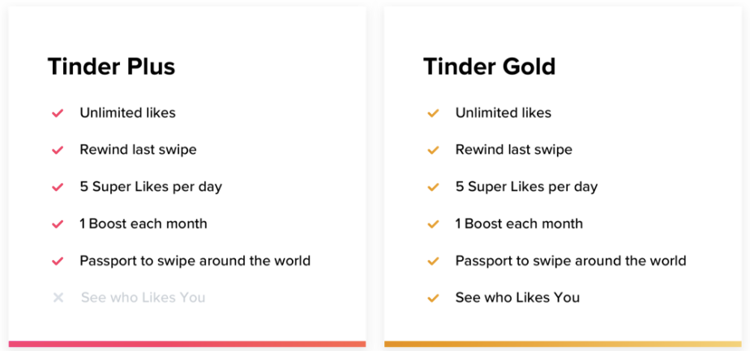
On Tinder, users pay $9.99/month for Plus, which includes unlimited likes and in-app purchases such as Super Likes, Boosts, and Like Rewards. Tinder Gold is an additional $4.99/month and allows users to see who has already liked them on the app.
Subscription apps work best when users can try the service before paying. If users begin to rely on the app, they are more likely to pay for extra features and benefits.
One approach for maintaining a strong group of paying users is to lower rates as users commit to your app for longer periods. For example, if they pay $9.99/month for a year, offer a single annual payment of $100 for the second year.
Step 3: Track Mobile App Use, Purchases, Sign Ups
After choosing and implementing a mobile app monetization strategy, set and carefully track your Key Performance Indicators (KPIs).
Your KPIs will include engagement, activity, and revenue metrics:
- App usage
- Time spent in app
- Number of in-app purchases
- Number of subscriptions and sign ups
Track your results, and experiment to see what works best for your app and your users.
You may find that a combination of tactics, such as pairing a premium app with a freemium app (like SkyView), is best for generating revenue.
Or, you may find that a different monetization tactic is more effective than the first one you tried.
For example, Tinder experimented with in-app purchases previously, but Tinder’s current subscription tiers propelled the app to the top-grossing spot in the Apple App Store.
Make Money With Your Mobile App
As you decide how to make money with your mobile app, follow 3 steps:
- Step 1: Define goals for monetizing your app
- Step 2: Choose a mobile app monetization model
- Step 3: Track app engagement and revenue
